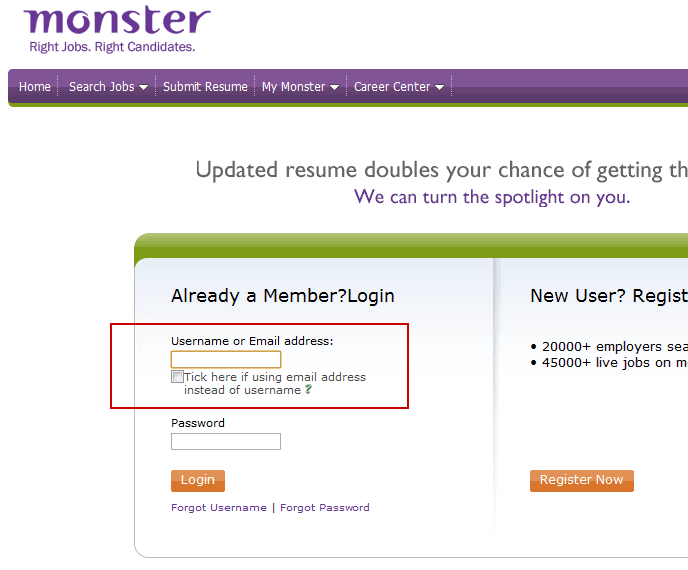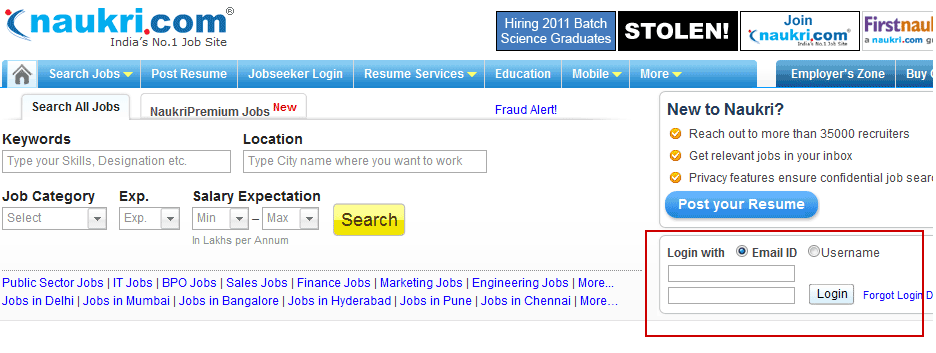Junglee has once again got us to debate on our current favorite topic – Ecommerce. Many of us doubting that if current Ecommerce models did it right because Amazon chose an completely diagonal approach to enter Indian market with Junglee.com.
Facts first – Junglee.com has not invented product discovery and price comparison. Pricegrabber.com is one of the best products in this space for US. Shopping.com is owned by Ebay, and many other players in India as well.
There are already lot of posts talking about how Junglee has got it right and it will be the door or gateway to drive traffic and enable transactions on Indian Ecommerce sites. Well that may be true, but honestly I find this really weird, just because Junglee is backed by Amazon – does not mean it will be success or that it is the correct approach. Herd mentality thinking! I guess it is too early, driven by speculation without valid reasoning.
Google Buzz went wrong; Google+ is a disaster; Google Search plus your world is a messed up product. Facebook withdrew from daily deals, Twitter launched activity tab (silently withdrew that in new roll-out) or Netflix tried Qwikster. Point is – big companies make big mistakes.
On the other hand – Amazon has a thing of entering market at very early stage by introducing new products/verticals like AWS, eBooks, Kindle or making an very thoughtful late entry like Kindle Fire (Tablet) or by acquiring category creator or owners like Audible, Diapers or Zappos.
Here are some points I would want to specifically highlight about Junglee –
Competition –
- Junglee is not competing against Flipkart or Letsbuy or any other Ecommerce player in this market at this stage. Product discovery & product transactions are distinctly different verticals., but what Junglee is attempt affects these players.
- Junglee is not competing even against Google. With 1.2 crore products, it means Junglee will contribute more pages to Google’s search index than any other Ecommerce site in India. Most consumers will discover Junglee through Google.
- Amazon.com has unmatched resources/experience in Search Engine (paid & natural) expertise; it clearly highlights it as one of the reasons for partners to list on Junglee. (Read point 3 here: http://services.amazon.in/services/product-ads/how-it-works/#/services/product-ads/faq/)
How Junglee might change the rules through discovery –
Ecommerce services have limited options of online marketing – Direct Traffic, SEO, SEM, Display Advts, Affiliate Marketing, Email & Social Media. (The funded ones get to do – TV, Radio & Outdoors). Compared to the cost associated with other formats of marketing – SEO guarantees long term and sustainable traffic acquisition mode. Overall high cost of acquisition in other formats of marketing is leveled down only through Direct traffic or SEO. Yes, Social is free but cost of acquisition is still a big proportion as users are acquired through discounting coupons.
Taking previous point ahead, SEO is pure content play and Amazon is master at that. With 1.2 crore products – Junglee will add approximately 3Mn+ pages to Google index, index size is typically 3X-4X for factors like review pages/ recommendations pages / category pages and so on. Due to this sheer size of index and high quality content placement, Junglee will quickly start rising in its natural search rankings. This will affect both – partners who has listed on Junglee and others like Flipkart who have chosen not to.
Here is why –
All products listed on Junglee (or any Ecommerce site) can be classified as two
- Standardized catalog products (Books, Digital Cameras, Laptops, DVDs, etc)
- Non standard products (Jewellery, Toys, Clothing, etc)
- For standardized product like say this Canon Digital Camera – the content includes product description which is standard on every site; but will be enhanced on Junglee with recommendations, reviews and more.
- For non-standard products like this Mayur Pendant Sapphire offered by CaratLane, despite content being exactly the same, even without reviews or recommendations – Junglee will quickly be listed above CaratLane for multiple factors, key being vastness of catalog for Pendants & Jewellery.
And this is one of the key reasons why natural search traffic on both websites listed or not listed with Junglee will be affected big time. Over time, a high proportion of natural search traffic will be taken by Junglee and will be distributed by it.
This also provides a very large opportunity for small players (including unfunded) or offline retailers (who are lost at times on online marketing) to acquire qualified users.
For those who have not listed, it makes some perfect sense to get their products listed on Junglee as they will witness a gradual decline in natural search traffic. And to get traffic & acquire those customers from Junglee – they will require to be competitive on pricing.
Product listings are Free.
Really? and you believed that.
Amazon is selling Kindle Fire below its cost, because it is confident that it will recover revenues of the device through content consumption. If you are thinking that Amazon will not make anything out of Junglee.com – you are wrong. When it comes to churning out online user behavior data and consumption patterns, no other Ecommerce service can do it better than Amazon.
Junglee has the entire product catalog required for Ecommerce. Soon Amazon will have all the insights it wants to know about Indian consumers – Products consumer are searching for, Product-Price ratios or even Demand / Supply for all products categories.
Challenges for Junglee –
A product discovery catalog with 1.2 Crore products is not easy thing and Amazon is doing this more efficiently than anyone else with its own core product – amazon.com. Challenges for updating inventory, prices, reviews or recommendations exist, but are not big for Amazon. Junglee can really force upon real-time price and inventory updates to its partners and get them to standardize it.
What would be more interesting is Amazon could localize the product – showcasing partners who can ship in least amount of time to say – Panaji or Kolhapur; deep integrate with offline retailers and help making purchase decisions – like a Apple iPad 2 is available now in Croma (2 Kms away from your location) at Rs.500 discount than buying at an online store.
From what I know – Croma maintains a list of products available for sale in every store on its central inventory management (I was once asked to visit another Croma store to pick up an mobile phone, the staff kept the last piece off shelf). Currently Junglee.com is a minimum viable product, but can Amazon get to this?
Where does this all lead to for Amazon –
Two options ahead for Amazon –
- Amazon Market Place
If Amazon is keen – this can happen tomorrow. Junglee has the product catalog, simply enable an payment gateway and instead of redirecting traffic to partner sites, start sending customer transaction orders which its partners can fulfill. - Amazon Store
Keep it slow, learn more about users / markets. And when the time is right launch a full fledge Ecommerce service.
And its very likely that Amazon will take the route two. Feel like investing in Amazon now? Ouch.

